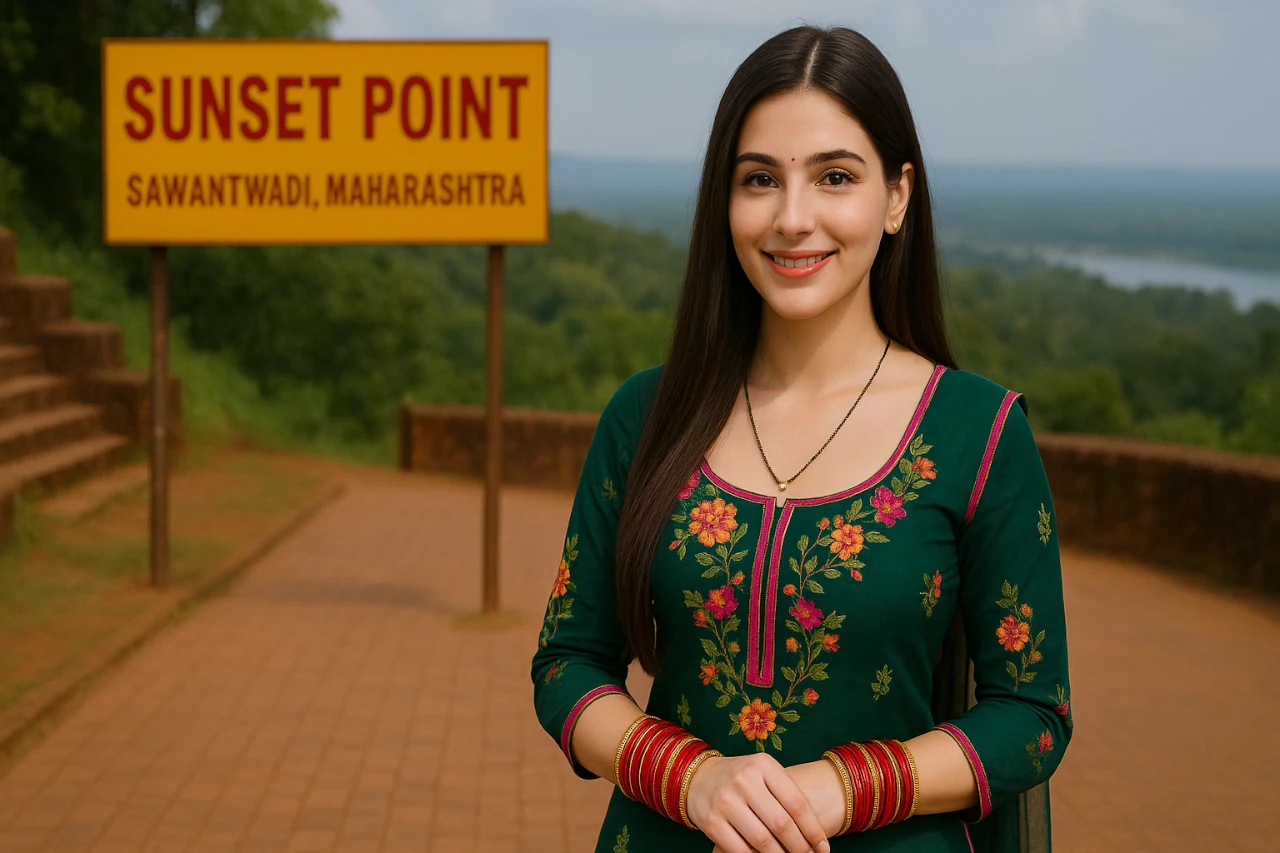Sawantwadi: Heritage, Art, and Nature Bliss
Where Royal Legacies Dance with Artisan Dreams Amidst Konkan’s Emerald Embrace
🔴 Introduction: The Soul of Konkan Unveiled
Nestled in Maharashtra’s coastal Konkan belt, Sawantwadi is a symphony of History, Art and Untouched Natural Beauty. Once the capital of the Sawant Bhonsle dynasty, this town is a living museum where time-honoured crafts like Ganjifa card-making and lacquerware thrive alongside mist-laced lakes and crumbling forts. Unlike commercialised tourist hubs, Sawantwadi whispers stories of Maratha valour, Portuguese intrigues, and artistic resilience. Wander through its vibrant bazaars smelling of dried fish and kokum, or lose yourself in the frescoed halls of its 18th-century palace—now a boutique hotel run by royalty. Here, every monsoon-soaked hill and every hand-painted playing card pulses with a legacy that refuses to fade.
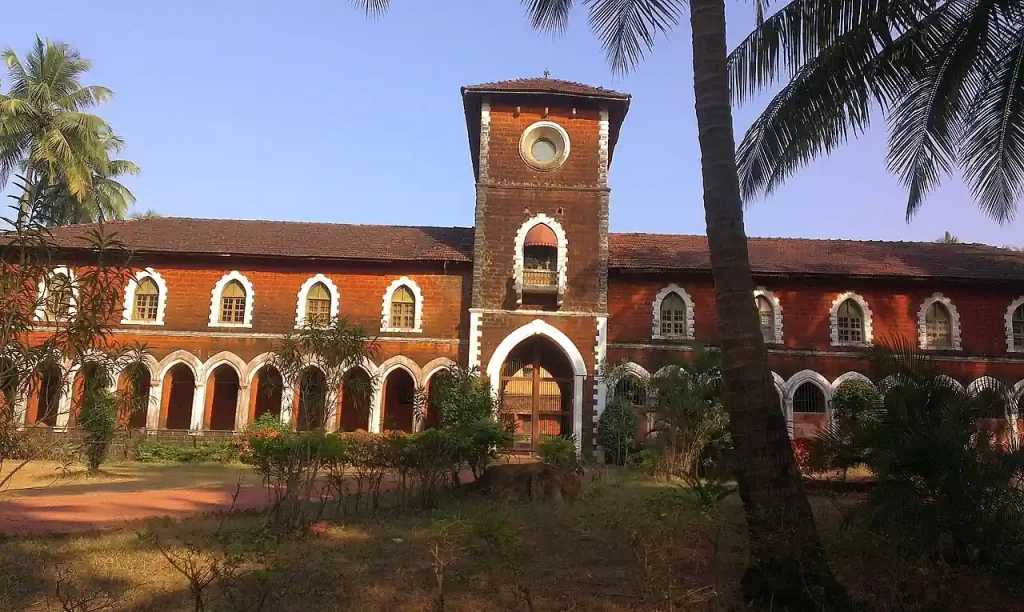
🌄 Detailed Introduction to Sawantwadi, Maharashtra, India
Sawantwadi, nestled in the Sindhudurg district of Maharashtra’s Konkan coast, is a town where history, art, and nature converge. Founded as the capital of the Sawant Bhonsle dynasty in the 17th century, its name derives from the rulers (“Sawants”) and the landscape (“wadi,” meaning garden). Strategically positioned between the Arabian Sea and the Western Ghats, it served as a critical maritime hub for European powers and regional empires like the Bijapur Sultanate and Marathas. The town’s legacy is etched in its wooden handicrafts, Ganjifa art (Persian-origin playing cards), and lacquerware, introduced by Telangana Brahmins centuries ago.
The Sawantwadi Palace, built in the 18th century by Khem Sawant III, dominates the town’s skyline. Overlooking Moti Talao Lake, its laterite stone architecture blends Maratha grandeur with Portuguese balconies, reflecting the region’s multicultural influences . Post-Independence, the royal family transformed part of the palace into a boutique hotel and art museum, preserving artefacts like coronation portraits and hand-painted Ganjifa cards.

Culturally, Sawantwadi pulses with Malvani traditions. The local language, Malvani (a Konkani-Marathi dialect), dominates daily life, while festivals like Nag Panchami feature specialty foods like Patolya (steamed rice-jaggery cakes). The town’s economy thrives on kokum farming, fishing and artisan crafts, though urbanisation is gradually reshaping its agrarian roots.
Geographically, Sawantwadi spans 132 km², with laterite hills, coconut groves, and sandy coastal soils. Its tropical climate brings monsoon deluges (4,242 mm annually) and steamy summers (up to 38°C), making winter (19°C – 30°C) ideal for exploration. As a gateway to Goa and the Konkan Railway, Sawantwadi balances heritage charm with emerging tourism, offering lakeside serenity, forest treks, and artisan workshops that defy commercialisation.
Also Read
Exploring Darbhanga, Bihar: History, Culture, Temples and Travel Guide
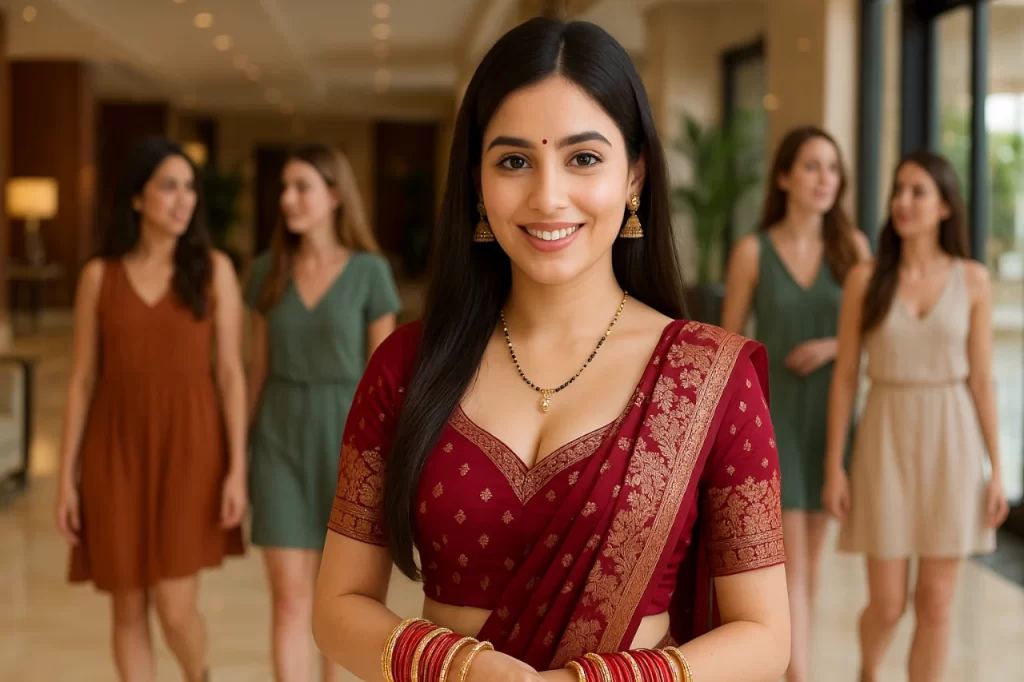
🟢 In this deep-dive guide, we’ll unravel Sawantwadi’s secrets:
⦿ Royal Chronicles: From Shivaji’s battles to the British annexation.
⦿ Architectural Wonders: Indo-Portuguese palaces and sacred caves.
⦿ Artisan Alchemy: The dying art of Ganjifa and lacquerware mastery.
⦿ Nature’s Bounty: Trekking forests, serene lakes, and waterfall trails.
⦿ Local Life: Malvani feasts, temple rituals, and monsoon festivals.
Plus: Granular Travel Tips, Climate Insights and Exclusive Local Interviews!
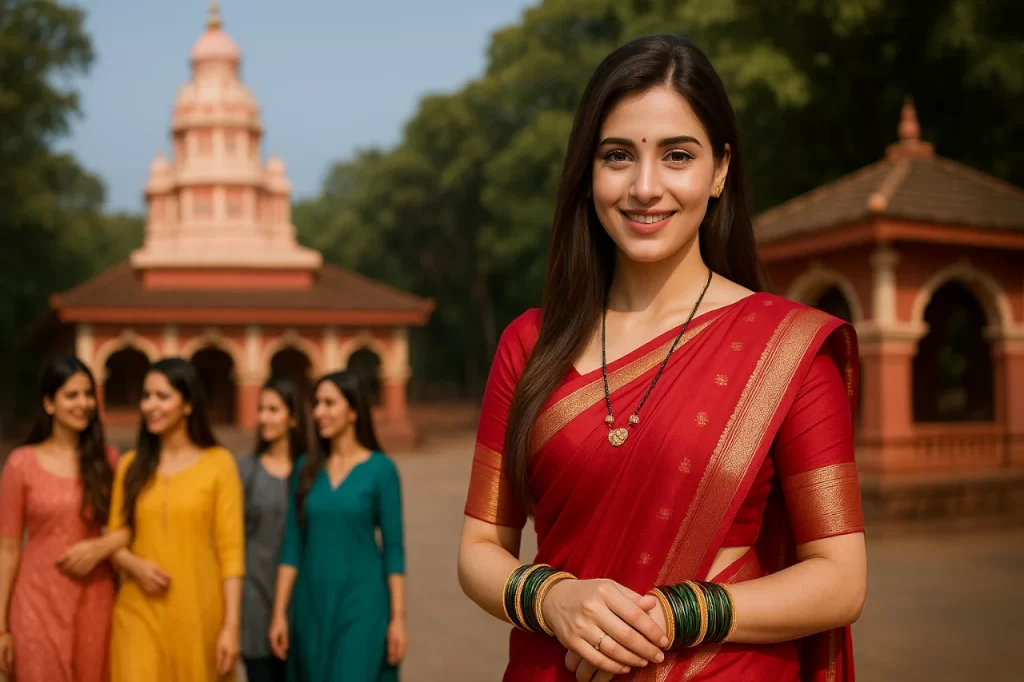
➤ Detailed History: Thrones, Treasons & Artistic Revolutions
🔘 The Rise of the Sawant Bhonsle Dynasty (1510–1947)
Sawantwadi’s saga began as a strategic coastal outpost for the Bijapur Sultanate. Mang Sawant, founder of the Bhonsle dynasty, rose from feudal lord to sovereign ruler in 1627. His descendant, Khem Sawant II, shifted the capital to Sundarwadi (today’s Sawantwadi), leveraging alliances with Mughals against Chhatrapati Shivaji. But betrayal brewed—Lakham Sawant’s pact with Bijapur sparked Chhatrapati Shivaji’s wrath, leading to the 1662 Battle of Hodawade, where Lakham met his end.
🔘 Colonial Twilight & Artistic Renaissance
By 1924, the British crowned 12-year-old Pancham Khemraj (“Bapusaheb”). His mother, Regent Parvatidevi, revolutionised education and arts. Post-Independence, the royals transformed their palace into a heritage hotel and art hub. As Shivramraje Bhonsale (current heir) told us: “We swapped crowns for chef’s hats—but kept Ganjifa alive. It’s our love letter to history”.
🔘 Architecture: Where Maratha Grandeur Meets Goa’s Whimsy
➸ Sawantwadi Palace: A fusion of Maratha stonework and Portuguese balconies. The central Darbar Hall boasts Ramayana frescoes and teak-carved thrones.
➸ Temples: Mahadevgad Fort’s 16th-century Shiva shrine, with rock-cut steps and Konkan sea views.
➸ Local Homes: Laterite-stone houses with Mangalorean tiled roofs, designed to breathe in the humid coast.

🔘 Distances from Major Indian Cities (Brief Info.)
| City | Distance (km) | Travel Time (hrs) | Best Route |
| Goa (Panaji) | 50 km | 1.5 hrs | NH748 → SH114 |
| Pune | 400 km | 8 hrs | NH48 to Kolhapur, then SH121 |
| Mumbai | 530 km | 10 hrs | NH66 via Panvel |
| Hyderabad | 690 km | 13 hrs | NH65 to Solapur, NH52 to Kolhapur |
| Bengaluru | 750 km | 14 hrs | NH48 via Belgaum |
Note: Distance is approximate and travel time may vary. Please check with google maps or local authorities before travelling.
Note: Please scroll down for Comprehensive Guide on How to Reach Sawantwadi from Major Indian Cities.
🔘 Cultural Tapestry: Art, Food & Festivals
➨ Ganjifa Cards: The Divine Game
Born in Persian courts, Ganjifa arrived via Telangana Brahmins in the 17th century. Sawantwadi’s artisans craft circular cards depicting Vishnu’s Dashavatara (10 incarnations). Each 120-card set is hand-painted with organic pigments:
➸ Symbolism: Matsya (fish) to Kalki (apocalypse)—a moral compass disguised as play.
➸ Process: Tamarind-seed paper → lacquer coating → 20 days of brushwork.
👉 Artisan Raju Nayak laments: “Only 8 families remain. We teach kids to save this ‘godly game’ from slots apps!”
➨ Lacquerware: Jewel-Toned Legacy
Andhra migrants brought lac-turning in the 1700s. Today, Artisans Mold Mango wood into jewellery boxes, using techniques like:
➸ Chhapai: Floral motifs in gold leaf.
➸ Araish: Mirror-sheen polish from natural resins.
➨ Malvani Cuisine: Konkan’s Spicy Heart
➸ Must-Try: Solkadhi (Coconut-kokum drink), Bangda curry (Mackerle), Patolya (Rice-jaggery steamed cakes).
➸ Food Markets: Banda Bazaar (Tuesdays) — Vendors sell dried shrimp, palm jaggery, and jackfruit chips.
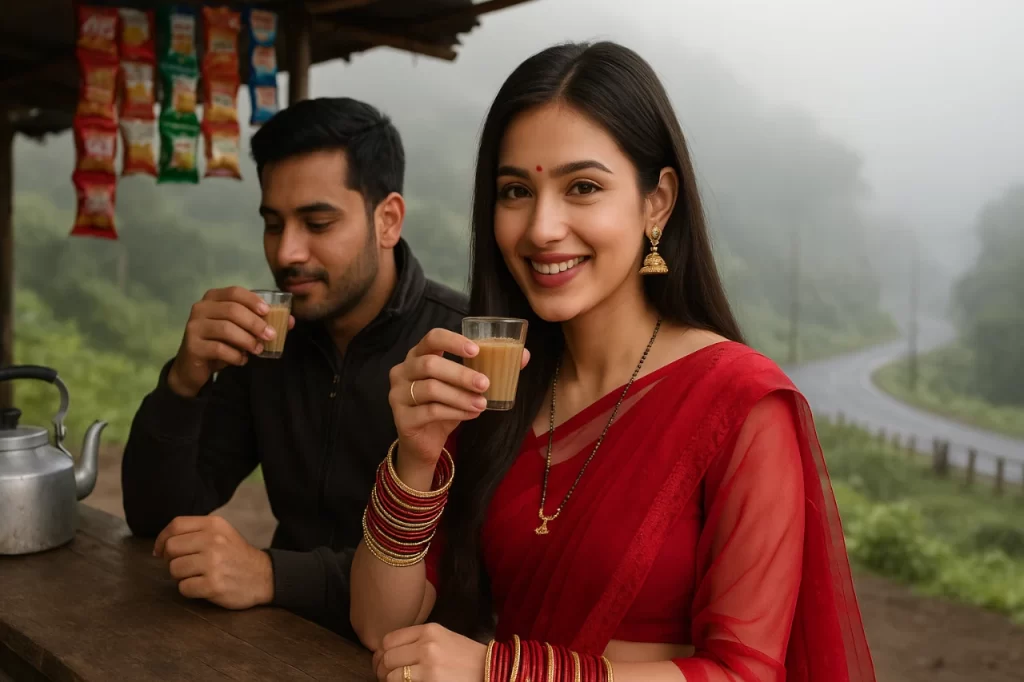
🔘 Traveler’s Toolkit: Climate, Attractions & Itineraries
➨ Climate & Best Time to Visit
☁️ Winter (November–February): 19°C – 30°C, ideal for palaces and lakes.
🌧️ Monsoon (June–September): 25°C – 32°C, 90% humidity; waterfalls roar but leeches abound!
☀️ Summer (March–May): Up to 38°C; stick to shaded crafts workshops.
🔘 Top Attractions (Deep Dive)
🎯 Moti Talao Lake
⦿ Highlights: Lotus-filled waters, 300-year-old Jal Mandir (Floating Temple), paddle boating.
⦿ Local Secret: At dusk, artisans sell lacquer bangles near the Ganesh Ghat.
🎯 Shilpgram Craft Village
⦿ Experience: Watch Ganjifa painters, try lac-turning, buy cow-dung eco-paper notebooks.
⦿ Festival: Annual December fair—folk dances, terracotta workshops.
🎯 Amboli Hill Station (29 km)
⦿ Waterfalls: Kavlesaṭ, Mahadevgad—mists create “Cloud Bridges”.
⦿ Wildlife: Endemic Amboli bush frogs and velvet-fronted nuthatches.
🎯 Hiranyakeshi Temple
⦿ Myth: Where Goddess Parvati’s sweat birthed the Hiranyakeshi River.
⦿ Trek: 2-km forest trail to origin cave—carry pepper spray for monkeys!
🏁 5-Day Monsoon Itinerary {Option 1}
⦿ Day 1: Palace museum → Ganjifa workshop → Moti Talao sunset.
⦿ Day 2: Amboli waterfalls → Mahadevgad Fort.
⦿ Day 3: Hiranyakeshi cave trek → Malvani lunch at Dhaba by the Lake.
⦿ Day 4: Shilpgram crafts → Banda Market bargaining.
⦿ Day 5: Cooking class (learn Patolya) → Konkan railway sunset ride.
🌧️ Monsoon Itinerary (5 Days) {Option 2}
⦿ Day 1: Palace Museum → Moti Talao sunset.
⦿ Day 2: Amboli Waterfalls → Mahadevgad Fort.
⦿ Day 3: Hiranyakeshi cave trek → Solkadhi Tasting.
⦿ Day 4: Shilpgram Craft Demo → Banda Market.
⦿ Day 5: Malvani cooking class (learn Patolya).
Note: You can plan your 5-Day Monsoon Itinerary according to your own preferences. We have mentioned two options above.
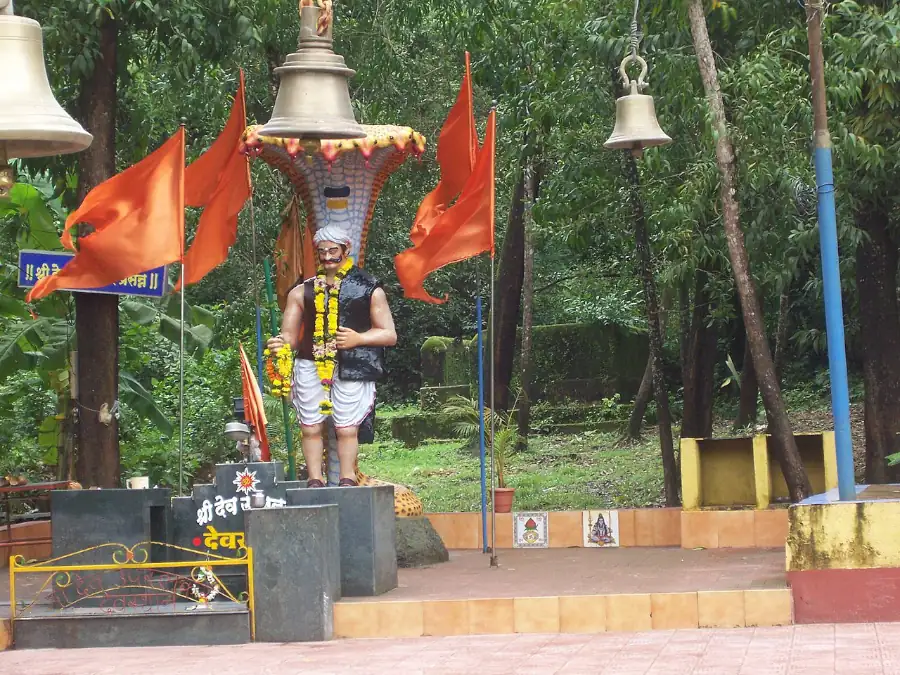
🕰️ Historical Timeline with Local Interviews
➸ 1627: Khem Sawant I establishes dynasty; shifts capital to Sawantwadi.
➸ 1662: Shivaji defeats Lakham Sawant for allying with Bijapur.
➸ 1924: Child-king Bapusaheb crowned; Regent Parvatidevi pioneers education reforms.
➸ 2005: Palace museum opens, preserving Ganjifa art.
👉 Artisan Raju Nayak’s Insight: “Youth chase IT jobs, but our Dashavatara cards teach dharma. We host workshops to keep this alive”.
🌟 Detailed List of Notable People and Their Work
➸ Sanjay Manjrekar: Former Indian cricketer; part of Sawantwadi’s sporting legacy.
➸ Ashok Patki: Music director for Mile Sur Mera Tumhara; promoted Konkani folk music.
➸ Vijay Manjrekar: Mid-20th-century cricketer; inspiration for regional youth academies.
➸ Mangesh Padgaonkar: Poet celebrated for Marathi-Konkani verse.
📊 Detailed Demographics of the Region
⦿ Population: 47,921 (2011 census); near-equal gender ratio.
⦿ Literacy: 82% (vs. national 59.5%); male (85%), female (79%).
⦿ Languages: Malvani (70%), Marathi (25%), Konkani (5%).
⦿ Economy: Farming (Kokum, Rice), fishing, handicrafts, eco-tourism.
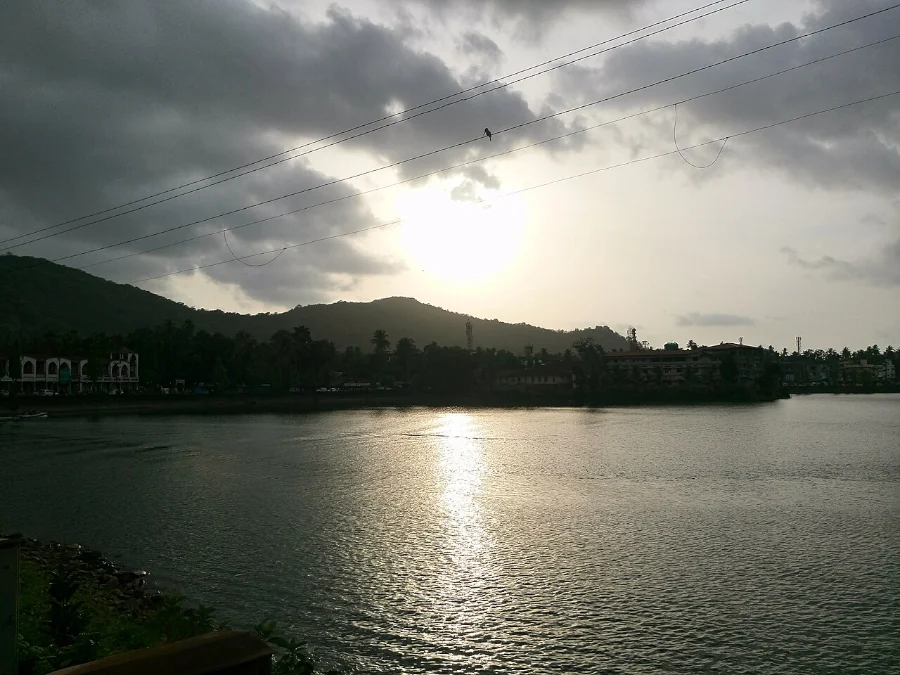
🌤️ Climatic Conditions Across Three Seasons
☁️ Winter (November–February):
⦿ Temperature: 19°C – 30°C; low humidity (56%).
⦿ Activities: Palace tours, lake boating.
☀️ Summer (March–May):
⦿ Temperature: Up to 38°C; high humidity (78%).
⦿ Tips: Indoor craft workshops; hydrate with Kokum Sherbet.
🌧️ Monsoon (June–September):
⦿ Rainfall: 4,242 mm; 93% humidity.
⦿ Attractions: Waterfalls at Amboli; leech-proof gear advised.
📍 Complete List of Talukas (Tehsils) in Sindhudurg District
➸ Sawantwadi
➸ Vengurla
➸ Kudal
➸ Malvan
➸ Devgad
➸ Kankavli
➸ Dodamarg
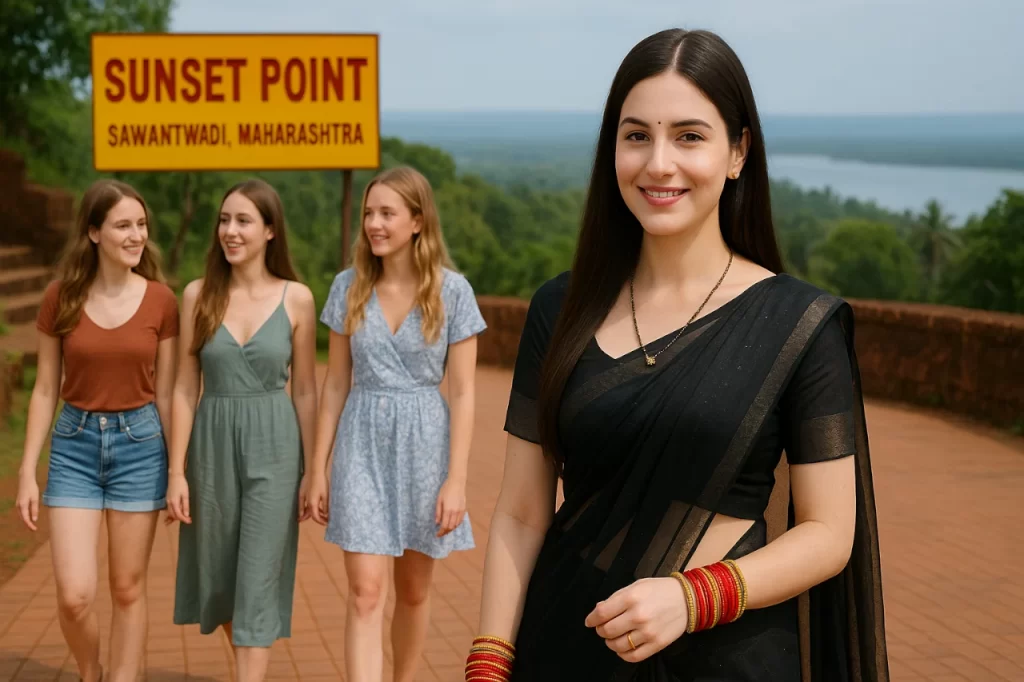
🟣 Detailed Section Breakdown
🏰 Architectural Marvels of Sawantwadi: A Granular Exploration
Sawantwadi’s architectural landscape is a captivating fusion of Maratha Grandeur, Portuguese influences, and indigenous Konkan craftsmanship. Ruled by the Sawant Bhonsle dynasty for centuries, the town’s structures reflect strategic cultural synthesis and artistic patronage. Below is a detailed analysis of its key marvels:
⛔ Sawantwadi Palace: A Symphony in Laterite Stone
➨ Construction & Materials: Built between 1755–1803 by Khem Sawant III using Red Laterite Stone quarried locally, the palace spans 6.5 acres. Its design blends European Arches (Portuguese influence) with Maratha courtyards and British-era Jharokhas (Overhanging Balconies).
➨ Structural Innovations:
➸ Roof System: Original packed-mud upper floors were replaced with Industrial Polymer Sand (IPS) during restoration, while teakwood columns were reinforced with steel casings for earthquake resistance.
➸ Ventilation: Cross-ventilated corridors and 10-foot-thick walls maintain 25°C indoor temperatures year-round.
➨ Art Integration: Ganjifa artists hand-painted Dashavatara Motifs (Vishnu’s ten incarnations) on Doors, Mirrors and Furniture. Suite knobs feature avatar symbols – e.g., Fish-shaped handles for Matsya Room.
⛔ Moti Talao Lake Complex: Engineering Elegance
➨ Hydraulic Mastery: Created in 1874, this artificial lake uses Gravity-fed Channels from the Western Ghats. Its 1.2 km perimeter features:
➸ Jal Mandir: A floating Shiva Temple on a Limestone Platform, Accessible via Stone Causeways.
➸ Ganesh Ghat: Stepped embankments with concealed drainage to handle monsoon surges.
➨ Gardens: Landscaped with Endemic species – Coconut Palms, Jamun and Mango Trees – arranged in geometric Mughal-inspired patterns.
⛔ Taisaheb Wada: Queens’ Sanctuary Transformed
➨ Original Layout: Built in 1890 for royal consorts, this annex had 22 cramped rooms. Restoration architects Vijay Gajbar and Abhishek Bhatnagar reconfigured it into 6 suites by:
➸ Removing partition walls to create vaulted ceilings (18 ft height).
➸ Installing Stained-glass Skylights depicting Malvani folk scenes.
➨ Courtyard Dynamics: A central Courtyard with terracotta-tiled flooring hosts interactive Ganjifa workshops. The space doubles as an open-air dining area, lit by Brass Lanterns suspended from tamarind-wood beams.
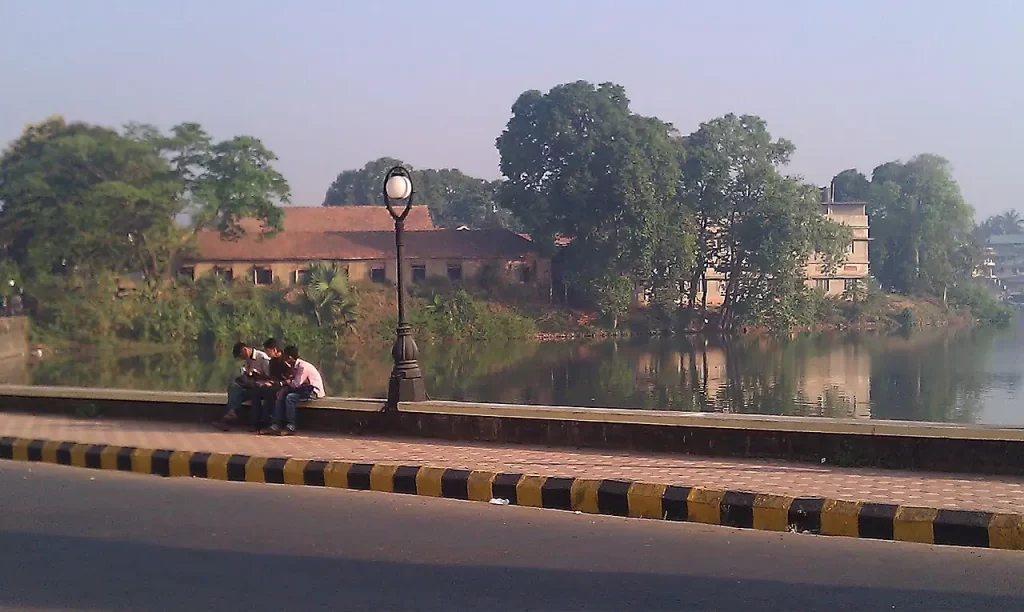
⛔ Lacquerware Ateliers: Craft Embedded in Architecture
➨ Workshop Design: Artisans’ studios within the palace use North-facing Clerestory Windows for optimal diffused light. Worktables are angled at 15° to reduce carvers’ spinal strain.
➨ Process Integration:
➸ Wood Seasoning: Mango wood is cured in Saltwater Tanks beneath the floors for 6 months.
➸ Lac Application: Circular “Lac-turners’ Pits” allow artisans to rotate pieces while applying resin.
⛔ Fusion Elements: Colonial Meets Konkan
➸ Staircases: Double-helix staircases inspired by Goan forts, carved with Konkani Wave Motifs.
➸ Doors: Teak doors with Hidden Peepholes (for security) and Carved Lintels showing scenes from the Ramayana.
🔍 Technical & Cultural Nuances
➨ Climate Adaptations:
➸ Monsoon Management: Laterite’s porous nature absorbs 30% more moisture than brick, preventing wall dampness. Roof slopes at 60° angles accelerate rainwater runoff.
➸ Summer Cooling: Courtyards funnel sea breezes via wind catchers, reducing indoor heat by 8°C – 10°C.
➨ Symbolic Decor:
➸ Ceiling Frescoes: Gold-leaf depictions of Hiranyakeshi River Mythology (Goddess Parvati’s Sweat) in the Durbar Hall.
➸ Threshold Art: Entrance steps embedded with Lacquer Lotus Inlays – symbols of Royal Purity.
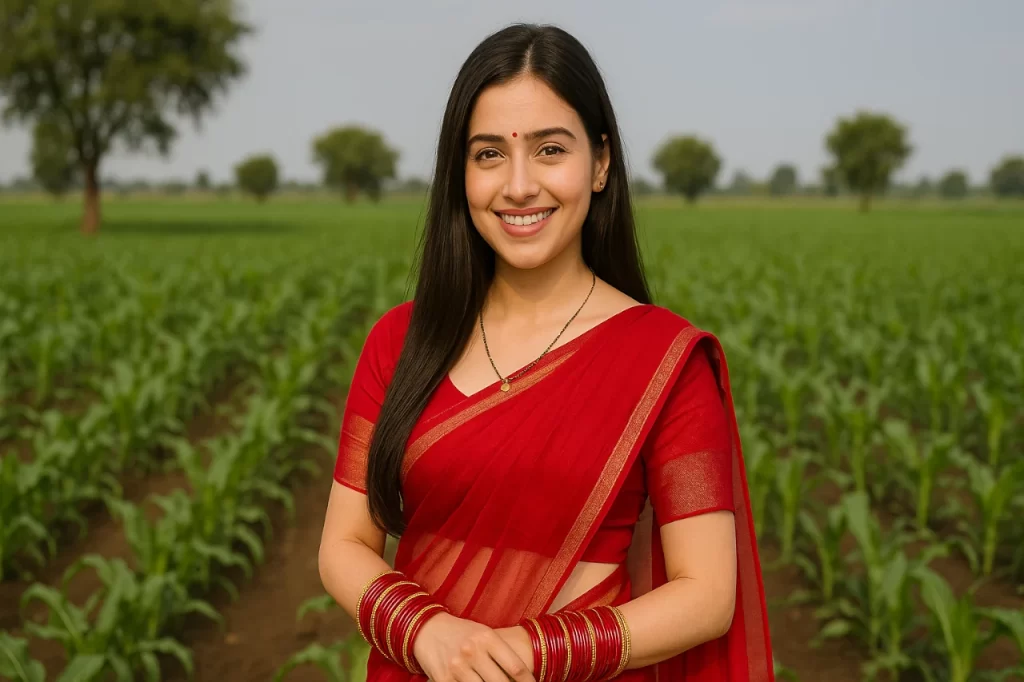
⚒️ Restoration Techniques & Sustainability
➨ Bat Colony Relocation: 300 bats were humanely displaced using Ultrasonic Repellents during renovation.
➨ Eco-Practices:
➸ Waste Reduction: 98% of demolition debris (wood, laterite) was repurposed for garden pathways.
➸ Energy: Solar panels powering suites generate 40% surplus energy, fed back to local grids.
🌿 Beyond the Palace: Vernacular Architecture
➸ Chitar Ali Lane: Artisans’ homes with Mangalorean Tile Roofs and Walls made of Laterite Rubble Masonry. Front porches feature Wooden Charkhas (Lac-turning wheels).
➸ Hiranyakeshi Temple: Rock-cut shrine using Interlocking Stone Technology (No Mortar). The sanctum’s Echo Effect amplifies chants by 3 seconds.
💎 Legacy in Modern Design
The palace’s architectural philosophy – “Heritage without Hegemony” – rejects European Mimicry, celebrating indigenous forms. As artisan Raju Nayak notes: “Our ancestors built palaces that breathed with the land. Today, we carve wood so it sings our stories”. This ethos positions Sawantwadi as a benchmark for Living Heritage Conservation in India.
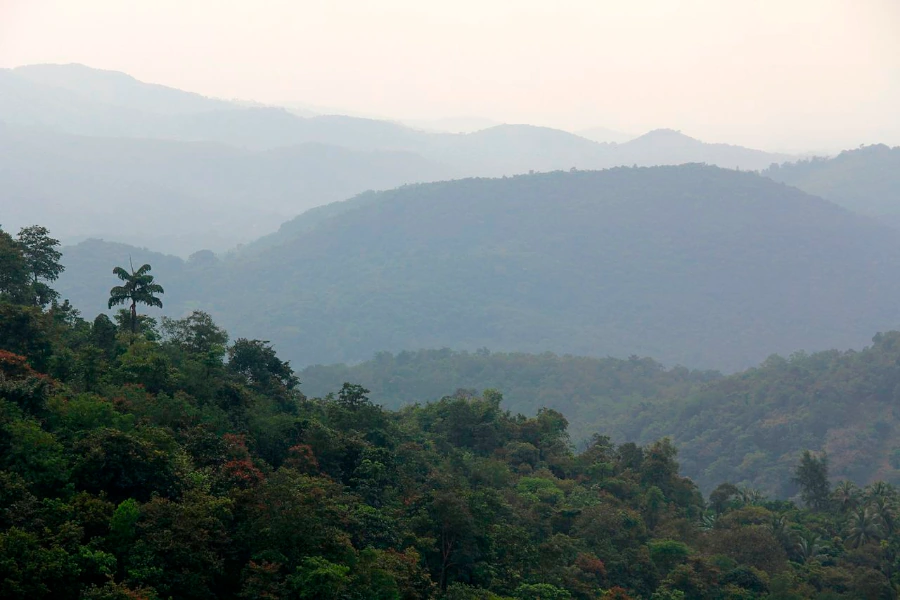
🌄 Comprehensive Guide: How to Reach Sawantwadi from Major Indian Cities
Sawantwadi, nestled in Maharashtra’s Konkan coast, is accessible via air, rail, and road networks. Below is a granular breakdown of travel options from key Indian cities, including routes, durations, costs, and local transit tips.
✈️ 1. By Air: Nearest Airports
➤ Goa’s Airports (Primary Gateways):
➨ Dabolim Airport (GOI): 50 km from Sawantwadi.
➸ Connectivity: Direct flights from Delhi (2.5 hrs), Mumbai (1 hr), Bengaluru (1.5 hrs).
➸ To Sawantwadi: Prepaid taxis (₹1,500 – ₹2,000; 1.5 hrs) or MSRTC buses (₹120; 2 hrs) from airport exit.
➨ Manohar International Airport, Mopa (GOX): 80 km away.
➸ Budget Option: Shared shuttle vans (₹250/person) to Sawantwadi bus stand.
➤ Kolhapur Airport (KLH): 128 km away; limited flights from Mumbai/Pune. Taxis cost ₹4,000 (3 hrs).
🚉 2. By Train: Konkan Railway Hub
➤ Sawantwadi Road Railway Station (SWV): 6 km from town centre.
➨ Key Trains:
⦿ Mumbai CSMT–Madgaon Janshatabdi: Daily; 8.5 hrs from Mumbai (₹225 – ₹650).
⦿ Trivandrum Rajdhani: Stops at SWV; connects Delhi (28 hrs), Kota (20 hrs).
➨ Local Transit: Auto-rickshaws (₹100) or hotel shuttles to city.
➨ Alternate Stations:
⦿ Kudal (36 km): Connects to Mumbai trains like Kokan Kanya Express. Taxis cost ₹800.
⦿ Thivim (Goa, 40 km): For south-bound travellers; taxi to Sawantwadi (₹900).
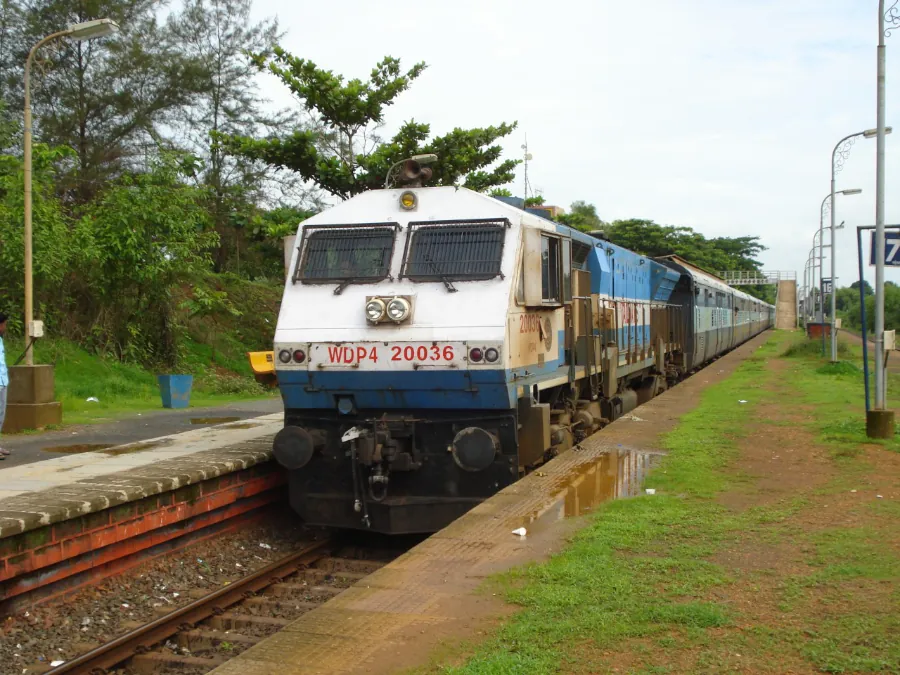
🚗 3. By Road: Highways and Bus Routes
➨ National Highways:
⦿ NH66 (Mumbai–Goa): Direct route to Sawantwadi; 518 km from Mumbai (8–9 hrs).
⦿ NH748 (Kolhapur–Sawantwadi): Scenic Ghat section; 110 km from Kolhapur (2.5 hrs).
➨ Bus Services:
⦿ From Mumbai: MSRTC Shivneri buses (₹600; 10 hrs) or private Volvos (₹800 – ₹1,200).
⦿ From Pune: Night buses (₹550; 7 hrs) via Kolhapur.
⦿ From Bengaluru: KSRTC buses (₹1,400; 14 hrs) via Belgaum.
🗺️ City-Wise Travel Breakdown
➨ Mumbai to Sawantwadi
| Mode | Route | Duration | Cost | Tips |
| Flight + Taxi | Mumbai→Goa (Dabolim)→Taxi | 4 hrs | ₹3,500 – ₹5,000 | Fastest; book early for Monsoon Discounts |
| Train | Direct trains (e.g., Janshatabdi) | 8.5–9 hrs | ₹225 – ₹550 | Cheapest; AC Chair Car Recommended |
| Road | NH66 via Panvel/Pen | 9–10 hrs | ₹2,800 (fuel) | Stop at Mahad for Malvani lunch |
➨ Pune to Sawantwadi
⦿ Train: Pune → Kolhapur → SWV (10 hrs; ₹300). Limited direct options.
⦿ Road: NH48 to Kolhapur → SH121 (400 km; 7 hrs). Toll: ₹550.
➨ Bengaluru to Sawantwadi
⦿ Train: Bengaluru → Miraj → SWV (16 hrs; ₹600). Transfer at Miraj Junction.
⦿ Bus: KSRTC sleeper (₹1,400; 14 hrs) via Hubli–Belgaum.
🚖 Local Transport in Sawantwadi
⦿ Auto-Rickshaws: Metered (₹30/km) or shared (₹20/person for 3 km).
⦿ Bike Rentals: ₹300/day; ideal for visiting Moti Talao or Hiranyakeshi Temple.
⦿ Bus Stand: Central hub near Raghunath Market; buses to Amboli (₹50; 1 hr) or Vengurla (₹40; 45 mins).
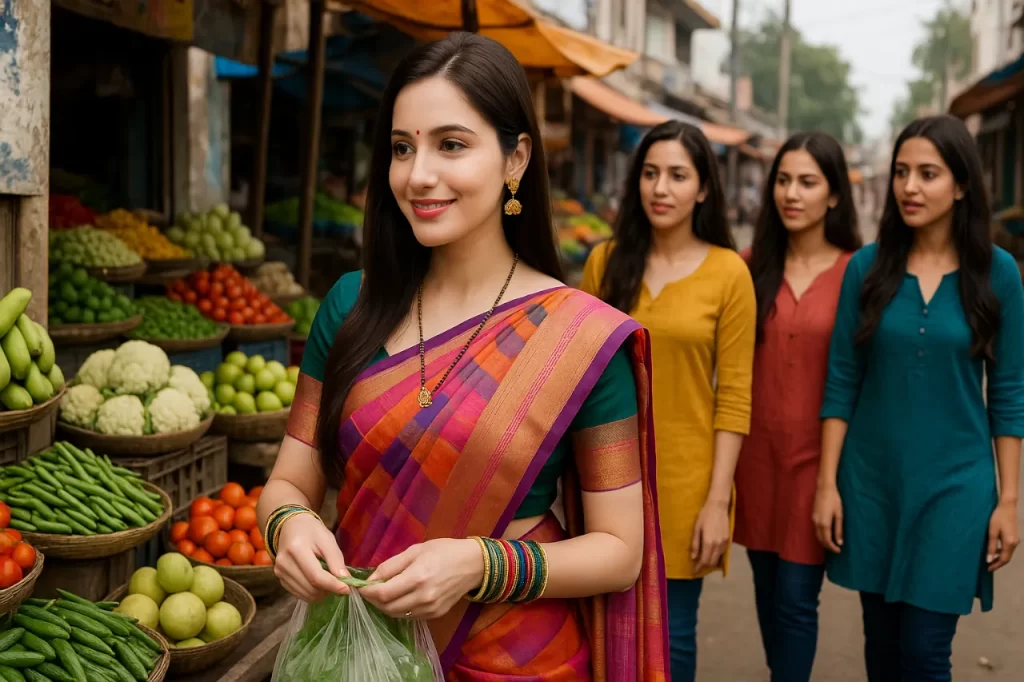
⚠️ Critical Travel Tips
➨ Monsoon Precautions (June–September):
⦿ Konkan Railway delays common; check alerts at [www.konkanrailway.com].
⦿ Avoid night driving on NH66 due to landslides.
➨ Booking Hacks:
⦿ Trains: Reserve 120 days early via IRCTC; Tatkal quota opens 1 day prior.
⦿ Flights: Use Goa flights for better frequency; Mopa often cheaper than Dabolim.
➨ Accessibility:
⦿ SWV station has ramps; buses lack wheelchair facilities.
💰 Cost Comparison Table (From Major Cities)
| City | Air (Taxi Inc.) | Train | Bus | Self-Drive |
| Mumbai | ₹4,000; 4 hrs | ₹550; 9 hrs | ₹800; 10 hrs | ₹2,800; 9 hrs |
| Pune | ₹5,000; 5 hrs | ₹700; 10 hrs | ₹750; 9 hrs | ₹2,500; 7 hrs |
| Bengaluru | ₹6,000; 6 hrs | ₹800; 12 hrs | ₹1,400; 10 hrs | ₹3,500; 10 hrs |
Note: Distance is approximate and travel time may vary. Please check with google maps or local authorities before travelling.
🌦️ Seasonal Considerations
☁️ Winter (October–February): Optimal for road/rail; fog-free days.
🌧️ Monsoon (June–September): Trains scenic but unreliable; flights least affected.
☀️ Summer (March–May): Day travel preferable; AC transport essential.
👉 Pro Tip: Use apps like Makemytrip or ixigo for real-time bus/train tracking. From Goa, combine Sawantwadi with beach hopping in Vengurla (30 km) for a dual-cultural experience! 🏖️🚗
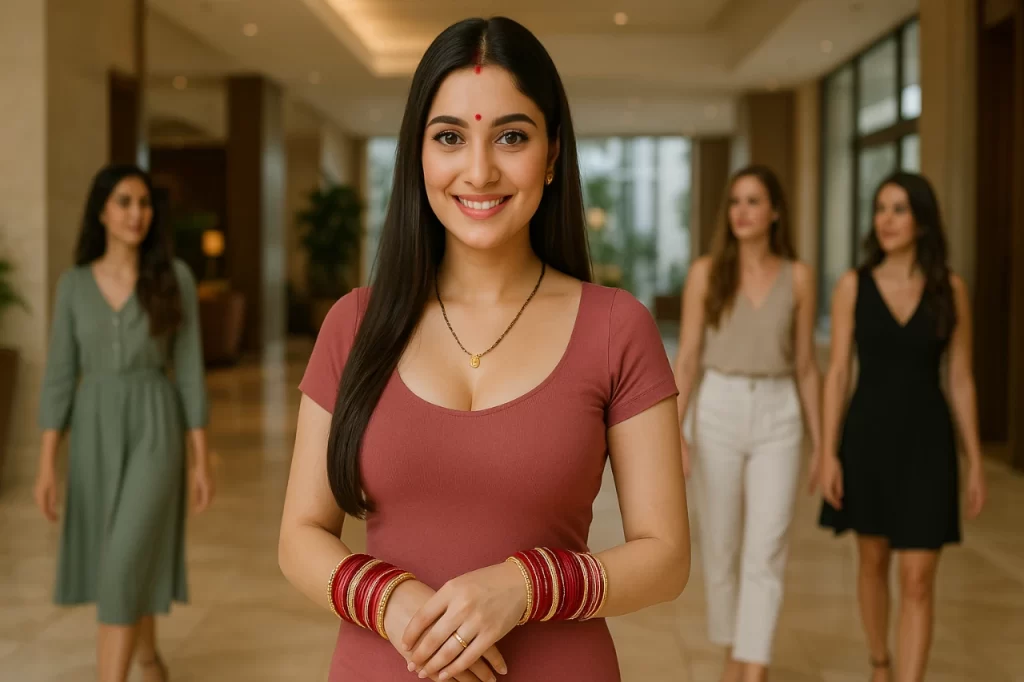
🏰 Best Places to Visit in Sawantwadi with Granular Details
⛔ Sawantwadi Palace: A Living Heritage Museum
➨ History & Architecture: Built between 1755–1803 by Khem Sawant III, this red laterite palace blends Maratha Grandeur with Portuguese balconies and teak-carved thrones. Once the Bhonsle dynasty’s seat, it now serves as a boutique hotel and museum.
➨ Key Attractions:
➸ Museum: Houses Royal Artefacts, Ganjifa Cards and Lacquerware (Opened by Rajmata Satvashiladevi in 2005). Displays include coronation portraits, 18th-century weaponry, and Ramayana frescoes.
➸ Art Workshops: Participate in Ganjifa card painting (₹200/person) or lacquerware demos. Sessions run daily 9 AM – 5 PM.
➨ Insider Tip: Book the “Royal Experience” package (₹2,500) for a private picnic in the palace gardens or a Malvani cooking class with the royal family’s chefs.
⛔ Moti Talao: The Emerald Heart of Sawantwadi
➨ Scenery & Activities: This 1874-built lake features pedal boating (₹50/person), a floating temple (Jal Mandir), and evening musical fountain shows. Encircled by paved pathways, it offers prime palace photography angles.
➨ Cultural Hubs:
➸ Ganesh Ghat: At dusk, local artisans sell Lacquer Bangles and Wooden Toys here. Bargain for hand-painted Ganjifa cards (₹300 – ₹800/set).
➸ Raghunath Market: Adjacent to the lake; sells Kokum Sherbet, Dried Shrimp and Malvani Spice Mixes (Tuesdays only).
⛔ Chitar Ali: Artisan Alley of Wooden Wonders
➨ Craft Legacy: A lane dedicated to the Chitari community, famed for hyper-realistic wooden fruits, toys, and lacquer jewellery boxes. Workshops demonstrate wood-carving techniques using mango/teak wood.
➨ Shopping Tips:
➸ Top Picks: Mango-shaped trinket boxes (₹150), Dashavatara Ganjifa sets (₹1,200).
➸ Best Workshop: Shree Sawantwadi Lacquerware Trust (open 10 AM – 6 PM) lets you customise pieces.
⛔ Shilpgram Craft Village: Konkan’s Creative Epicentre
➸ Experiences: Watch artisans craft cow-dung paper notebooks, weave bamboo baskets, and paint Ganjifa cards. Join daily workshops (₹200 – ₹500) or the annual December fair featuring terracotta sculpting and Thakar tribal dances.
➸ Must-Buy: Eco-friendly lacquer coasters (₹120) and Konkani musical instruments.
⛔ Hiranyakeshi Temple & Cave: Sacred Wilderness
➸ Mythology: Believed to be where Goddess Parvati’s sweat birthed the Hiranyakeshi River. The cave’s natural spring is considered holy.
➸ Trekking: A 2-km forest trail (45 mins) from the temple to the cave origin.
➸ Caution: Monkeys frequent the path; carry pepper spray. Guides charge ₹100 for storytelling.
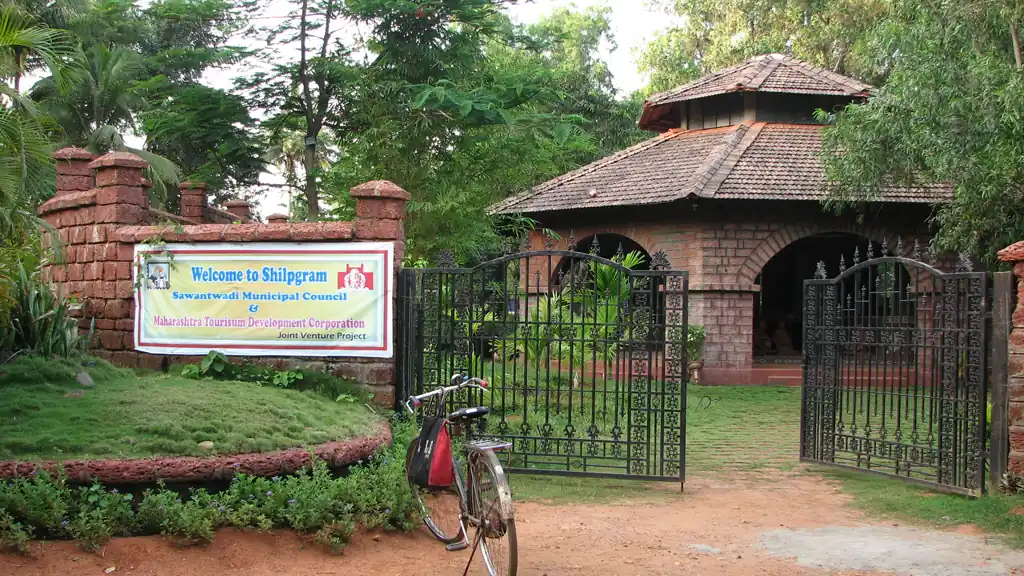
🚗 Day Trips from Sawantwadi (Under 40 km)
⛔ Amboli: Monsoon Paradise
➨ Attractions:
➸ Kavlesaṭ Waterfall: 29 km away; cascades 70 ft into a plunge pool. Visit July–September for peak flow. Leeches are common; rent gum boots (₹50) at entry.
➸ Mahadevgad Point: Panoramic views of Sawantwadi’s forests. Spot endemic Amboli bush frogs and velvet-fronted nuthatches.
➨ Local Eats: Amboli Hill Resort serves smoked Mackerel with Kokum Curry (₹180).
⛔ Pinguli: Tribal Puppetry Haven
➨ Thakar Adivasi Kala Angan: A cultural centre run by the Gangavane family.
➨ Features:
➸ Chitrakathi Paintings: 300-year-old narratives on tamarind paper.
➸ String Puppet Shows (₹150/person): Episodes from the Mahabharata.
➨ Workshops: Shadow puppet crafting (2 hrs; ₹300) using buffalo leather.
⛔ Vengurla & Sindhudurg Fort: Coastal Heritage
➸ Vengurla Beach: 30 km away; swim in tidal pools or visit the 17th-century Terekhol Fort (Entry ₹50). Try Karwari Fish Curry at beach shacks.
➸ Sindhudurg Fort: 65 km; built by Shivaji in 1667. Snorkel around the fortress walls (₹800) or join a guided history tour (₹200).
⛔ Lesser-Known Gems
➸ Kunkeshwar Beach: Secluded shores 45 km away; ideal for dolphin spotting (Nov–Feb). Rent kayaks (₹300/hr).
➸ Nirgaon Lake: Picnic amid birdwatching trails; spot kingfishers and cormorants. Open sunrise to sunset.
⏰ Practical Tips
➸ Timings:
⦿ Palaces/Museums: 9 AM – 5 PM.
⦿ Temples: 6 AM – 9 PM.
➸ Guided Tours: Heritage walks (₹150/person) cover palace-to-market routes.
➸ Avoid Crowds: Visit Moti Talao at dawn or post-7 PM for illuminated fountains.
“Sawantwadi isn’t just seen; it’s felt in the lacquer artist’s steady hand, the monsoon mist at Amboli, and the whisper of royal histories in palace corridors”.
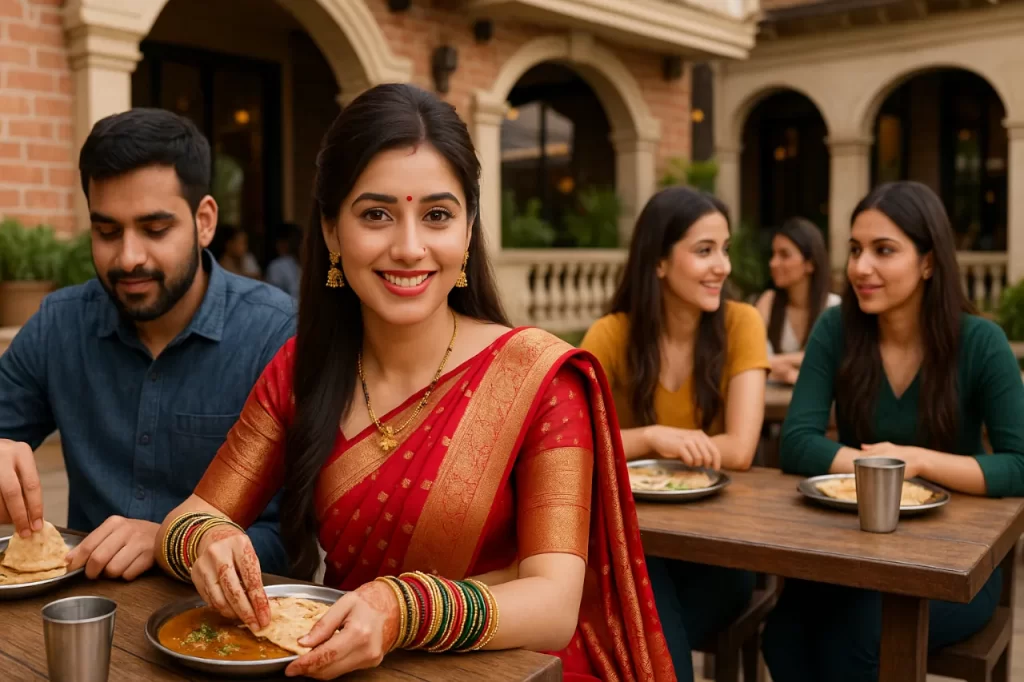
🏛️ Where to Stay in and near Sawantwadi: Granular Accommodation Guide
🏰 1. Heritage & Luxury Stays
➨ Sawantwadi Palace Boutique Art Hotel
➸ Rates: ₹7,000 – ₹12,000/night (USD 84–144).
➸ Facilities: Heritage suites with Ganjifa-themed decor, courtyard dining (Malvani Thali: ₹600/Meal), swimming pool, and guided artisan tours.
➸ Unique Feature: Managed by the royal family; rooms display original lacquerware and palace artefacts.
➸ Check-in: 12 PM; flexible for early arrivals with prior notice.
➨ Konkan Crown Resort & Club
➸ Rates: ₹5,500 – ₹9,000/night (USD 66–108).
➸ Facilities: Spa, gym, multi-cuisine restaurant (sea bass curry: ₹350), and pool. Direct access to Sawantwadi Road Railway Station (200 m).
➸ Check-in: 24-hour reception; late check-out (2 PM) at ₹500/hour.
🌿 2. Mid-Range Resorts & Eco-Stays
➨ Shilpgram Heritage Resort
➸ Rates: ₹2,500 – ₹4,000/night (USD 30–48).
➸ Facilities: Lake-view cottages, organic farm-to-table meals (Kokum curry: ₹180), craft workshops (lacquerware demo: ₹200/person).
➸ Highlight: Annual December craft fair with terracotta-making sessions.
➨ Sarvoday Eco Homestay
➸ Rates: ₹1,200/night (USD 14).
➸ Facilities: Solar-powered rooms, medicinal garden tours, and shared kitchen for self-cooking.
➸ Food: Farm-grown produce (jackfruit curry: ₹120); breakfast included.
🛏️ 3. Budget Hotels & Guesthouses
➨ Hotel Renuka Palace
➸ Rates: ₹800 – ₹1,500/night (USD 10–18).
➸ Facilities: AC rooms, 24-hour room service, and central location near Raghunath Market.
➸ Check-in: 11 AM; luggage storage free for early arrivals.
➨ Jeevandeep T S K Paryatak Niwas
➸ Rates: ₹650/night (USD 8).
➸ Facilities: Shared kitchen, lounge, and bicycle rentals (₹50/hour). Ideal for backpackers.
🏡 4. Home-stays & Farm-stays
➨ Hornbill Soirees Home-stays
➸ Rates: ₹1,100/night (USD 13).
➸ Facilities: Kitchenette, balcony with paddy-field views, and Malvani cooking classes (₹300/session).
➸ Host Tip: Mrs. Kulkarni guides guests to hidden waterfalls.
➨ Gennys Farmhouse
➸ Rates: ₹1,200/night (USD 14).
➸ Facilities: Pet-friendly, Mango orchard walks, and Bonfire Nights with folk storytelling.
⛪ 5. Dharamshalas & Pilgrim Stays
➨ Vitthal Mandir Dharamshala
➸ Donation: ₹200/night; shared bathrooms and pure-veg meals (₹50/meal).
➸ Rules: Curfew at 10 PM; priority for temple visitors.
➨ Jeevandeep Pilgrim Niwas
➸ Rates: ₹300/night; gender-segregated dormitories and prayer hall access.

🌊 6. Goa Proximity Stays (Under 20 km)
➨ Aquaholic Floating Villa (Pernem)
➸ Rates: ₹12,000/night (USD 144).
➸ Facilities: Private Pool, Kayaking and Goan-Portuguese Fusion meals.
➨ Escape Homestay (Pernem)
➸ Rates: ₹1,100/night (USD 13).
➸ Perks: Free shuttle to Sawantwadi Palace; hosts arrange spice plantation tours.
💡 Seasonal & Accessibility Tips
➸ Monsoon (June–September): Prioritise resorts with indoor activities (e.g., Shilpgram’s craft workshops). Humidity peaks at 93%.
➸ Winter (November–February): Book lake-view properties early; temperatures dip to 19°C.
➸ Accessibility: Konkan Crown offers wheelchair ramps; Sawantwadi Palace has limited ground-floor suites.
🚗 Transport Links
➸ Near Railway: Konkan Crown (opposite Sawantwadi Road Station), Hotel Ratnesh Premium (near bus stand).
➸ Airport Shuttles: Mopa Airport (Goa) transfers arranged by Sarvoday Eco Homestay (₹500/person).
✅ Additional Information:
➸ Pet Policy: Gennys Farmhouse allows pets (₹500 Cleaning Fee).
➸ Long Stays: Anandi Nivas MTDC offers monthly rates (₹18,000) with Kitchen Access.
➨ Summary
From Royal Palaces to Farm-stays, Sawantwadi blends heritage with Konkan hospitality. Budget travellers thrive in Dharamshalas, while luxury seekers revel in Art Hotels. Proximity to Goa expands options for beach-combining Itineraries.
Tip: Monsoon visits warrant waterproof gear but reward with emerald landscapes. 🌧️🌿

🍽️ Best Places for Refreshments with Authentic Local Food
Sawantwadi’s culinary scene revolves around Malvani Cuisine, characterised by coconut-based curries, dried fish, and kokum. Key spots include:
🍛 Bhalekar Hotel (Belgaum-Goa Highway):
➸ Specialties: Bangda Curry (Mackerel in spicy coconut gravy), Solkadhi (chilled kokum-coconut drink).
➸ Ambiance: No-frills, bustling eatery; meals served on banana leaves.
➸ Cost: ₹400 for two.
🍛 Savali Restaurant (Sawantwadi-Ambolli Road):
➸ Specialties: Kombdi Vade (Chicken Curry with deep-fried Bread), Zunka Bhakar (Spiced Chickpea flour with Millet Bread).
➸ Hours: 5 PM–12:30 AM; ideal for late dinners.
➸ Cost: ₹300 for two.
🍛 Lake View Restaurant (Moti Talao):
➸ Specialties: Freshwater fish fry, Amboli (Rice Pancakes).
➸ Ambiance: Lakeside seating with palace views.
🍛 Raghunath Market:
➸ Street Food: Chana Madrasi (Spicy Chickpeas), Kokum Sherbet, Dried Shrimp Packets. Open Tuesday mornings.

🏭 Industrial Development and Commercial Activities
➸ Key Industries: Handicrafts (lacquerware, Ganjifa), kokum processing, fishing.
➸ Education Hub: Jayanand Mathakar Government ITI offers carpentry and computer courses.
➸ Markets: Raghunath Market (handicrafts, spices); Banda Market (Tuesday Dried Seafood Sales).
🏢 Famous Industries and Companies
🔘 Sawantwadi Woodworks:
⦿ Products: Lacquerware jewellery boxes, Ganjifa cards.
⦿ Export: Artisans supply to luxury boutiques in Mumbai/Goa.
🔘 Shilpgram Cooperative:
⦿ Role: Markets artisan goods; runs training programs for women.
➤ FAQs
How to reach Sawantwadi without a car?
Take Konkan Railway to Sawantwadi Road (6 km from town). Auto-rickshaws charge ₹100 to the palace.
Where to buy Authentic Lacquerware?
Shilpgram Cooperative (fixed prices) or Shree Sawantwadi Lacquerware Trust (Direct from Artisans).
Is Sawantwadi safe for solo female travellers?
Yes! Stick to daylight explorations. Home-stays like Moti Villa have female hosts.
Best day trip from Sawantwadi?
Goa’s beaches (50 km) or the ancient Sindhudurg Fort (65 km).
➤ Conclusion: The Artisan’s Echo
Sawantwadi isn’t just a destination—it’s a dialogue between kings and craftsmen, monsoons and mountains. As the sunset gilds Moti Talao’s waters, you’ll grasp why this town outlived empires: its soul lies not in stone, but in the hands shaping wood into wonder. Come for the history, stay for the stories whispered in lacquer strokes.
➤ Sources:
➸ Wikipedia – Sawantwadi Taluka
➸ Interviews with artisans at Shilpgram (Aug 2023)
➸ Konkan: A Cultural Inventory (Dept. of Archaeology, Maharashtra)
Image Credit
➸ Wikimedia Commons – Sawantwadi
➸ Wikimedia Commons – Sawantwadi Palace Sawantwadi Maharashtra
➸ Wikimedia Commons – Sawantwadi-Dodamarg Wildlife Corridor in the Western Ghats
➸ Wikimedia Commons – Moti Talav Road at Sawantwadi – panoramio
➸ Wikimedia Commons – Sunset at Sawantwadi
➸ Wikimedia Commons – Shilpgram 9
➸ Wikimedia Commons – Shri Dev Upralkar of Savantwadi – panoramio
➸ Wikimedia Commons – Konkan Kanya Express
For more information, you can visit our website: ExploreXP
Ready to craft your Sawantwadi story? Tag #KonkanDiaries to feature on our community wall! 🌿🎨
“Inspired? Pin this guide for your Sawantwadi adventure! Share your Konkan memories below—we’d love to hear from you. For custom Itineraries, Subscribe to our Artisan-crafted Newsletter”.
Latest Posts
- Exploring Mughalsarai: History, Culture, and Travel
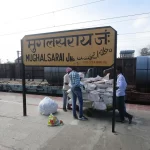
- Explore Katni, Madhya Pradesh: History, Culture, and Nature

- Ludhiana, Punjab, India – The Industrial Heartbeat with Timeless Heritage

- Unveiling Osmanabad (Dharashiv): Maharashtra’s Hidden Gem of History, Caves & Culture
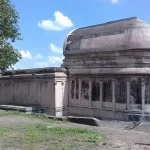
- Explore Sawantwadi: Maharashtra’s Hidden Gem of Heritage, Art, and Natural Splendour
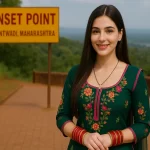
- Sajjangad Fort, Maharashtra – A Spiritual and Historical Odyssey

